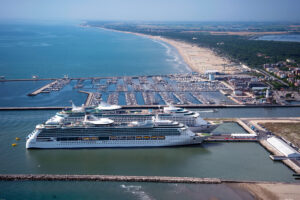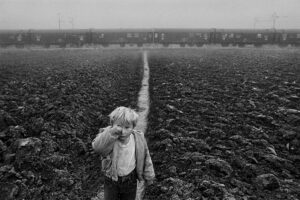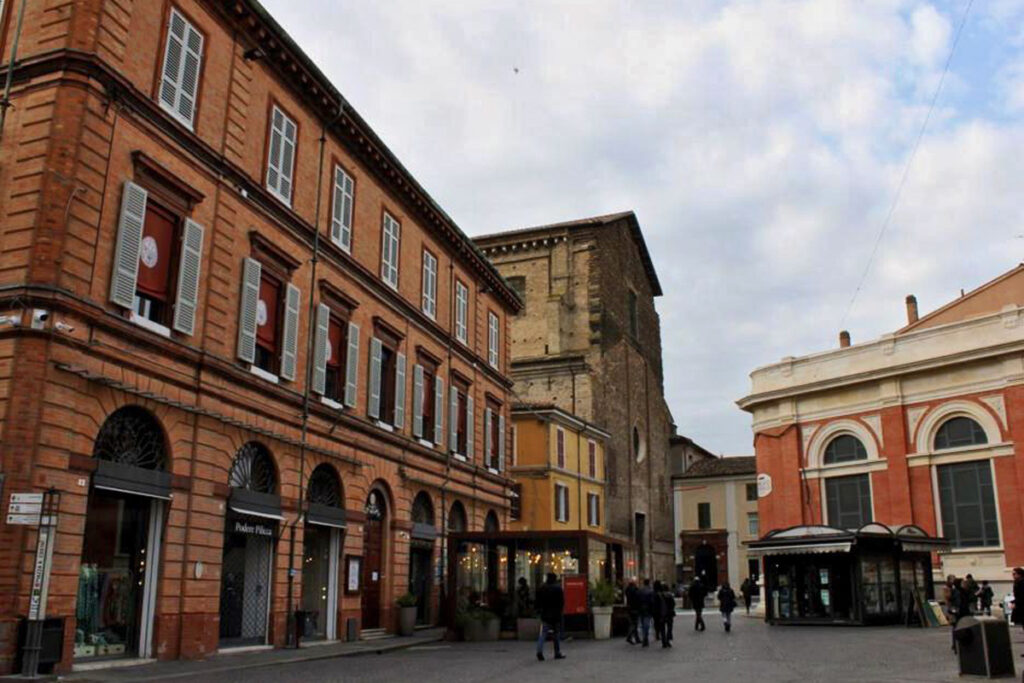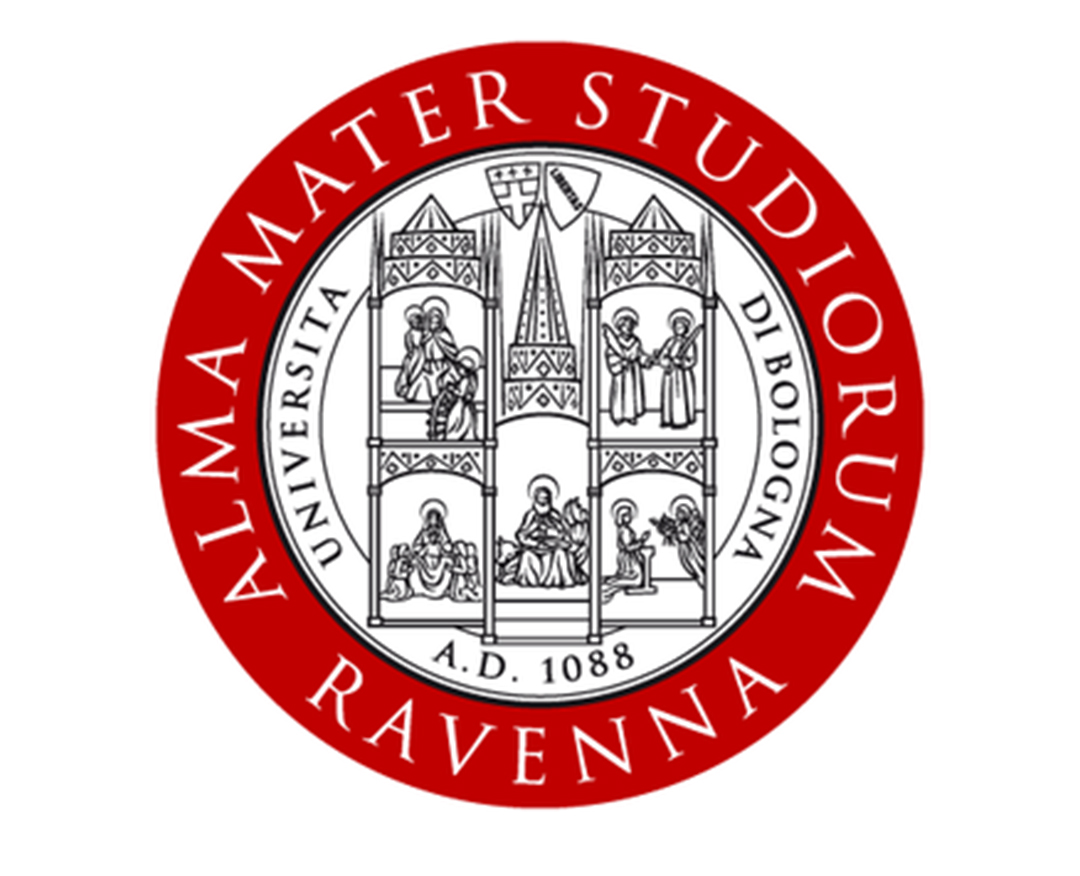Piazza Andrea Costa may be considered as a chest telling the architectural and archaeological stories of the city of Ravenna and its territory.
During the 6th century Ravenna underwent an important construction development, firstly with King Theodoric and then with Emperor Justinian. And right during Justinian’s reign, around mid-6th century, the most important religious buildings of the city were built, among which the small church of San Michele in Africisco.
The square took its current shape around the 20th century, following various topographic transformations and the closing of the rivers that crossed it during the late Middle Ages.
On the northern side of Piazza Andrea Costa is the Covered Market; on the southern one the seat of Casa Matha; on the eastern one is the building that now hosts Max Mara, a clothes shop, which partly incorporated what remained of the Church of San Michele in Africisco; and the western side of the square is the starting point of via Cavour, which, according to the tradition, would coincide with the southern bank of Flumisellum Padennae.
THE ANCIENT RIVER THAT CROSSED PIAZZA ANDREA COSTA
The history of the city is marked by a topographic development characterised by the presence of ancient water courses.
According to archaeological research, piazza Andrea Costa coincides with the ancient course of river Padenna, the city’s most important river, which flowed through the town and in which other minor water courses merged, among which Flumisellum Padennae.
Today’s Piazza Andrea Costa has always been known to literary sources for its problems related to the presence of these water courses and their resulting union in this place.
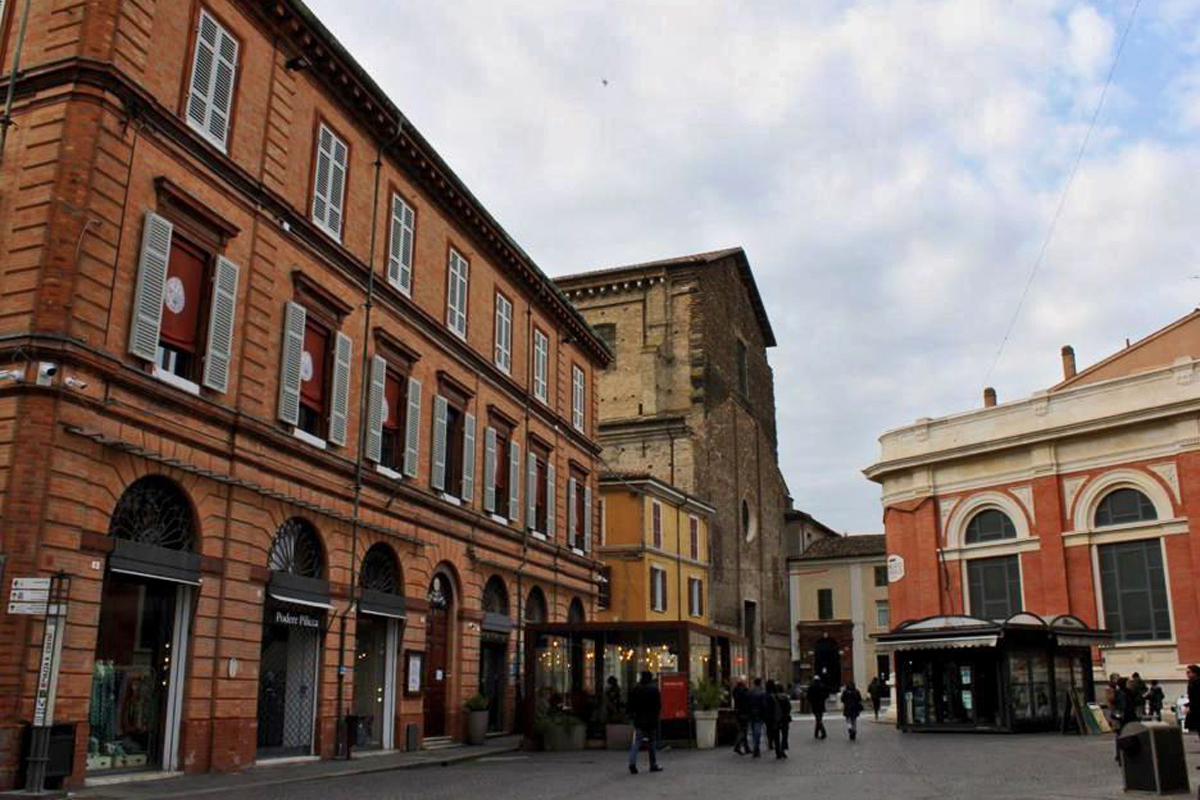
From an archaeological point of view, it was possible to recontruct the course of river Padenna (from north to south) and the one of Flumisellum Padennae (from west to east) thanks to archaeological evidence of two bridges that crossed them.
One of them was the bridge of Augusto – Pons Augusti – above Flumisellum, characterised by a big structure almost certainly dating back to Roman times. It was located at the crossroads of via Cavour, via Pasolini and via Salara and served as a connection point between the southern and the north-western part of the city.
River Padenna was instead crossed by the bridge of San Michele in Africisco, which was identified during the excavations works carried out in 1901 for the construction of the seat of Casa Matha.
Flumisellum was probably still there during the Middle Ages, even though there is no certain information about it. It is instead certain that, between the late Middle Ages and the modern ages – probably during Venetian domination – Flumisellum and river Padenna were closed and transformed into underground sewers.
SAN MICHELE IN AFRICISCO
The small Basilica of San Michele in Africisco, located on the eastern side of Piazza Andrea Costa, dates back to 545 AD.
The name “Africisco” probably derives from the one of the neighbourhood in which the building is located, once called “Ad frisigelo“, around today’s Covered Market. The church was built at the behest of Iulianus Argentarius, a rich banker of Syriac origin, and a certain Bacauda, who commissioned its construction as a vow to Archangel Gabriel following a miraculous healing.
The basilica, consecrated by archbishop Maximianus in 547 AD, appeared as a three-nave building, which were originally divided by pillars. The inside of the church was enriched by various floor and wall mosaics, which strongly contrasted with the modest-sized building and its simple structure.
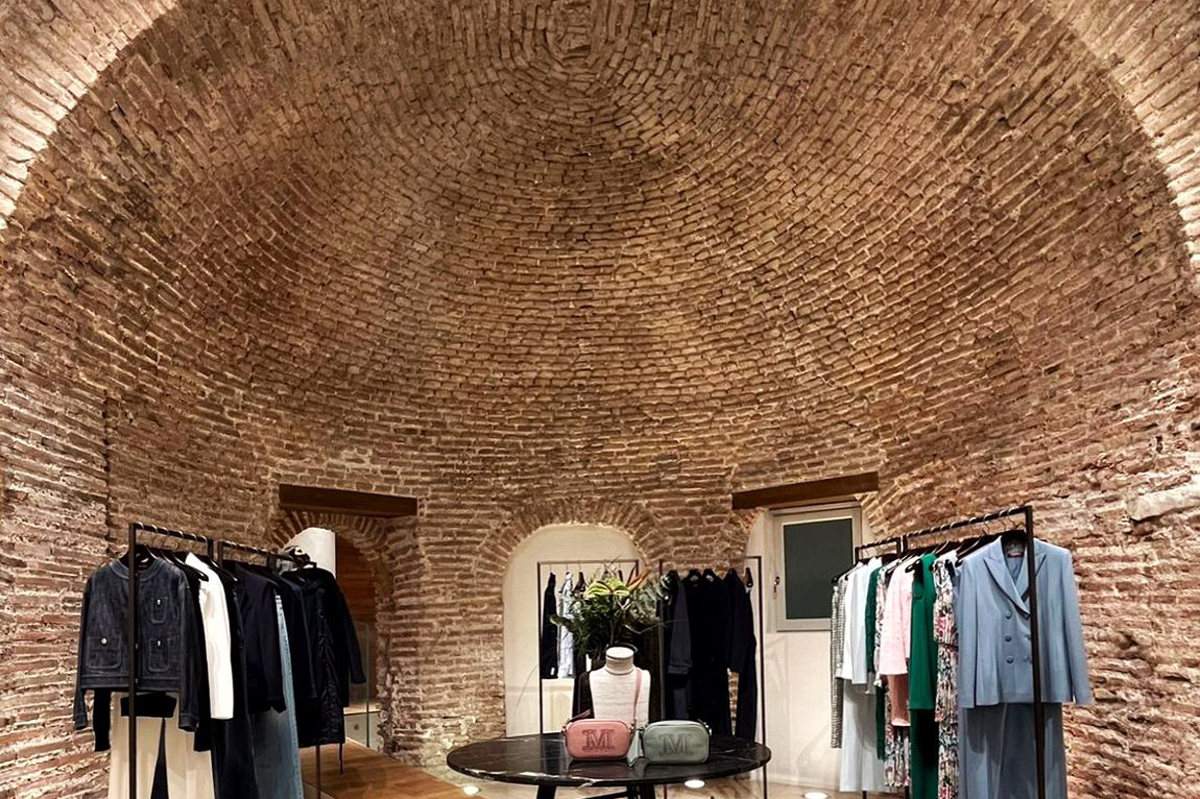
The mosaic of the apse, purchased by the king of Prussia in 1843, is the only thing that remains of the wonderful wall decoration. The precious mosaic, which underwent many restoration works that changed its aspect and colours, has at the centre the solemn figure of Christ holding a long cross in one hand and an open codex in the other, with archangels Gabriel and Michael on his sides. Since 1904, it is possible to admire the mosaic at the Bode Museum in Berlin.
The building underwent several renovation works and transformations over time. The church was deconsecrated in 1805 following the Napoleonic occupation, then it was sold to Andrea Cicognani, who transformed it into a fish shop in 1812, and was finally sold to Giuseppe Buffa in 1820, made use of the place as a wood storage. This definitively marked the decline of the building: even though Buffa firstly commited himself not to sell the mosaics of the church, he instead sold them a few years later.
Not much remains of the mosaic decoration, except for some parts preserved at the National Museum of Ravenna: a fragment of the floor mosaic with a floral pattern, a transenna of the presbytery and two reused capitals in typical Byzantine style. Other mosaic remains can be admired at the Museum of Torcello and at the Victoria & Albert Museum in London.
After the many events that involved it, the building hosts today a clothes shop, where it is still possible to see the structure of the ancient apse.
CASA MATHA
Casa Matha is a craft guild of fishermen, originally called Schola Piscatorum.
The first documented evidence of it dates back to 943 AD, thus classifying Casa Matha as Ravenna’s and the world’s most ancient guild.
The name would come from a very significant fishing tool, the hook. Casa Matha is currently hosted in a building in Piazza Andrea Costa, while originally it was located in today’s Covered Market.
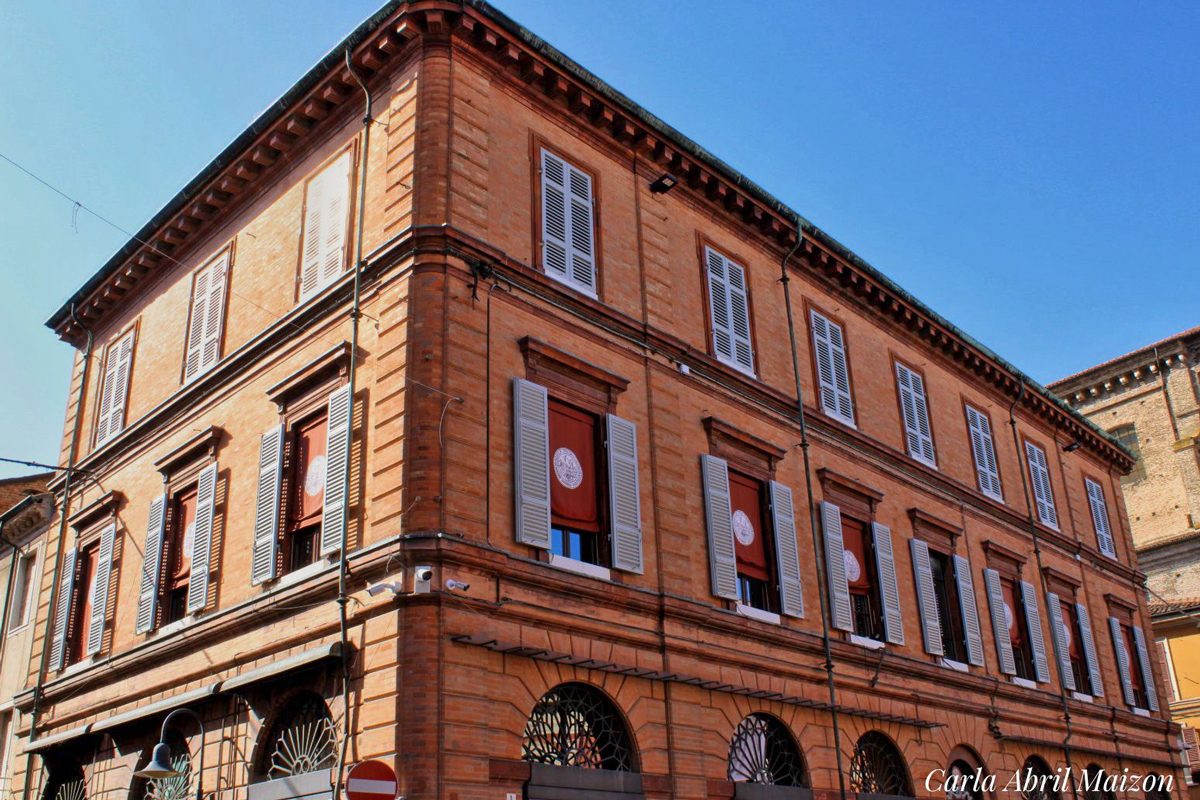
Thanks to Silvio Bernicoli, historical librarian from Ravenna, we know that the first seat of Casa Matha dates back to 1254, when the society purchased and renovated a domus magna, which was then demolished in 1715-17 at the behest of Cardinal Gozzadini to build a new building.
He describes the building as a two-storey structure: the upper floor was dedicated to congregations and places dedicated to the public officials, who had to issue ordinances on fishing and commerce and had administrative functions.
The ground floor, characterised by a portico, hosted a large commercial space designated for the sale of fish. This activity was eased by the close proximity to river Padenna, which facilitated the cleaning of fish and stalls.
The building remained as such until its complete demolition in 1893, which also included a renovation and changes of the urban morphology, with the distruction of the surrounding houses, demolished in turn to make space for the new and current seat of Casa Matha.
The current structure was completed in 1901 and was also the seat of a nautical school, active from 1919 to World War II.
The building features a typical late-19th-century facade and raises on three levels: the main entrance allows the access to the various spaces, among which the naval museum, halls for meetings of the Guild and the archive. One of the main spaces is the aula magna, where it is possible to admire frescoes with allegorical figures regarding various disciplines.
From an architectural point of view, the building is simple, perfectly integrating with the urban context of the city. Today, it hosts studies on the industry of fishing, ecology, soil and water protection.
The analysis of the many topographical changes to which Piazza Andrea Costa and its buildings were subject, shows how extremely important for Ravenna the rivers and its waters were, and their main role for the development of commercial activities in the city.
It is therefore possible to say that Piazza Andrea Costa is, today as it was then, an essential crossroads for Ravenna that fully mirrors its typical dynamism.
Article written by: Catena Marianna, Giubergia Giulia, Maizon Carla Abril, Susta Martina, Vicenzi Gaia.
The contribution was realised as part of the educational laboratory of digital communication – cultural promotion of the Alma Mater Studiorum – University of Bologna, Ravenna Campus.
The professor in charge of the laboratory is Prof. Maria Cristina Carile, supported by Giulia Ottaviani (PhD student in cultural and environmental heritage, Alma Mater Studiorum – University of Bologna), Chiara Zanola (DM Cultura) and Marco Ranieri (DM Cultura).

